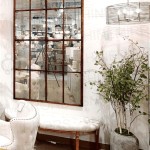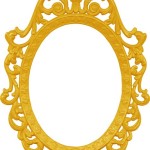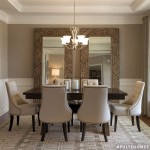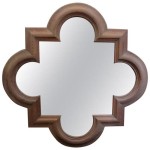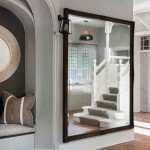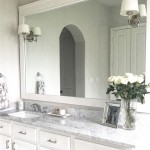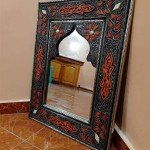Antique French Mirrors: A Reflection of History and Elegance
Antique French mirrors represent more than just reflective surfaces; they embody a rich history of artistry, craftsmanship, and cultural evolution. From the opulent designs of the Louis XIV period to the more delicate aesthetics of the Art Nouveau era, these mirrors offer a glimpse into the changing tastes and styles of France throughout the centuries. Their enduring appeal lies in their ability to add a touch of timeless elegance and historical significance to any interior.
Identifying Key Characteristics of Antique French Mirrors
Authenticating antique French mirrors requires careful examination of several key features. The materials used, construction techniques, and stylistic elements all contribute to determining the age and origin of a piece. Understanding these characteristics is crucial for collectors and enthusiasts alike.
The Evolution of French Mirror Design
The design of French mirrors has evolved considerably over time, reflecting the dominant artistic and cultural influences of each period. Early examples often featured simple, geometric frames, while later periods embraced more elaborate ornamentation, incorporating intricate carvings, gilding, and decorative motifs.
Materials and Construction: A Testament to Craftsmanship
Traditional French mirror making involved meticulous craftsmanship and the use of high-quality materials. Early mirrors utilized mercury-backed glass, while later techniques employed silvering. Frames were often constructed from wood, sometimes gilded or painted, or from other materials like bronze or gesso.
The Influence of Royal Patronage and Artistic Movements
Royal patronage played a significant role in shaping the development of French mirror design. The French monarchy, particularly during the reigns of Louis XIV and XV, commissioned elaborate mirrors for their palaces, fostering innovation and setting stylistic trends that influenced the broader market. Subsequent artistic movements, such as Rococo, Neoclassicism, and Art Nouveau, also left their mark on French mirror design, introducing new forms, motifs, and decorative techniques.
Caring for and Preserving Antique French Mirrors
Preserving the beauty and integrity of antique French mirrors requires careful handling and appropriate care. Cleaning should be done with gentle, non-abrasive methods and materials to avoid damaging the delicate surfaces. Environmental factors, such as humidity and direct sunlight, should also be considered to prevent deterioration.
The Value and Collectibility of Antique French Mirrors
Antique French mirrors hold significant value in the antiques market, with prices varying depending on factors such as age, rarity, condition, and provenance. Mirrors from specific periods or with notable historical connections can command particularly high prices. Collectors are often drawn to the unique artistry and historical significance of these pieces, making them sought-after additions to both private collections and museum displays.
Recognizing Reproduction and Imitation Mirrors
The popularity of antique French mirrors has led to the production of numerous reproductions and imitations. Distinguishing authentic pieces from later copies requires careful scrutiny and a thorough understanding of historical design features, materials, and construction techniques. Consulting with reputable antique dealers and appraisers can provide valuable assistance in authentication.
Different Types of Antique French Mirrors
Antique French mirrors encompass a wide range of styles and forms, each serving a distinct purpose and reflecting the prevailing aesthetic of its time. From the grand trumeau mirrors designed to adorn walls above fireplaces to the smaller handheld mirrors used for personal grooming, each type possesses unique characteristics and historical significance. Some notable examples include cheval mirrors, psyche mirrors, and overmantel mirrors, each contributing to the diverse legacy of French mirror making.
The Role of Antique French Mirrors in Interior Design
Antique French mirrors continue to be highly prized in interior design for their ability to enhance and elevate a space. They can serve as focal points, create an illusion of spaciousness, and add a touch of historical charm to a variety of settings. Whether incorporated into traditional or contemporary interiors, these mirrors offer a timeless elegance that transcends fleeting design trends.
The Cultural Significance of Mirrors in French Society
Beyond their decorative function, mirrors have held cultural significance in French society for centuries. They served as symbols of wealth, status, and artistry, reflecting the evolving tastes and values of different eras. From the opulent palaces of the French aristocracy to the more modest homes of the bourgeoisie, mirrors played an important role in shaping interior spaces and reflecting the social and cultural context of their time.

Antique French Mirror 258231 Ingantiques Co

Antique French Mirror 163044 Ingantiques Co

Antique French Mirrors

647 Antique French Mirrors For Ingantiques Co

Mirrors Renaissance Market Com

Pair Of Antique French Mirrors 344436 Ingantiques Co

Imw3257 Stunning French Antique Cushion Mirror

10 Elegant French Vintage Style Mirrors Country Cottage

Antique French Mirrors

Antique French Mirrors

